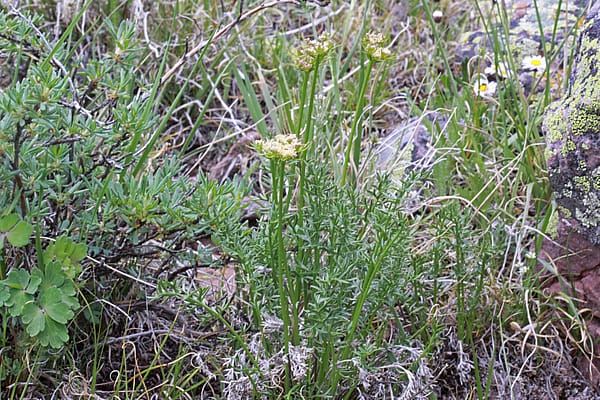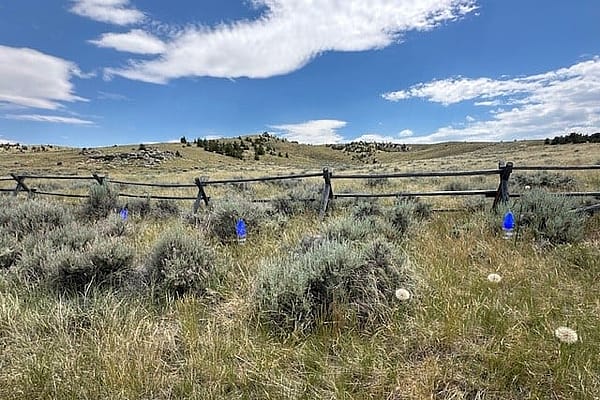
Conservation of Black-Footed Ferrets
Black-footed ferrets were first reintroduced to Meeteetse in 2016. Since then, there have been several subsequent releases including the one our staff participated in last week. Releases bring captive-raised black-footed ferrets from the breeding facility in Colorado to sites in the “wild.” These sites must have enough white-tailed prairie dogs to support the black-footed ferrets, at least 3,000 acres of colony. But why do releases keep taking place?

Back in 1987 when the last-known population of black-footed ferrets were removed from the wild, there were only eighteen individuals. A species once covering millions of acres of North America, the black-footed ferrets had been decimated. The practice of poisoning prairie dogs, the black-footed ferret’s main food source, to get rid of their burrows and exotic diseases such as canine distemper and sylvatic plague contributed to low population numbers of the carnivore.
Of the eighteen “founders” only seven successfully bred. That means all black-footed ferrets before 2020 were the descendants of those seven founders. Low genetic diversity and susceptibility to widespread diseases have made it hard to maintain ferret populations. The population on the Pitchfork Ranch outside of Meeteetse suffered from a sylvatic plague outbreak in 2018. Recovery from that outbreak has taken years and the release of ferrets from the breeding center.

On October 9, 2024, ten ferrets were released at burrows where the Wyoming Game and Fish Department (WGFD) did not see black-footed ferrets during the six-day, nocturnal surveys. These annual surveys are WGFD’s chance to see how the black-footed ferret populations are faring. WGFD staff and volunteers, usually from other agencies, drive along roads in the white-tailed prairie dog colony with a bright light attached to the vehicle. If a black-footed ferret looks at the light, their eyes will reflect it in a unique blue-green color. This allows WGFD to approximate how many ferrets are on the landscape. Due to their solitary nature, ferrets are often spotted solo. Spotting multiple ferrets in one location indicates a wild-born litter. Draper staff had the opportunity to see one such litter this summer during spotlighting. Litters like this are particularly important because they indicate a healthy population.

Mitigating disease gives ferrets every advantage. Four-wheelers spray tanks of a pesticide aimed at killing the fleas that carry sylvatic plague throughout the prairie dog colony. Scientists have also developed tasty, vaccine-filled treats for the prairie dogs. By protecting the white-tailed prairie dogs, we also protect their predator: the black-footed ferret.

In 2020, researchers cloned Willa, a female who did not breed during the establishment of the captive breeding program. Willa’s clone, Elizabeth Ann, was born in 2020, making her the first clone of a native, endangered species in North America. You can watch a panel discussion of the agencies and organizations involved in Willa’s cloning hosted by the Draper in 2022, here. Since then, two additional clones have been created to add their genetic diversity to the ferret population in Wyoming and elsewhere. While the clones themselves will not be released into the wild, their descendants will. Cloning the ferrets that did not breed can add three times the genetic diversity to the black-footed ferret genome. The hope is that with additional genetic diversity will come disease resistance, helping ferrets survive and thrive on the landscape.
There is no question that black-footed ferrets face some of the same challenges as they did back in 1987. Sylvatic plague, canine distemper, and the loss of white-tailed prairie dogs are challenges agencies such as WGFD and the U.S. Fish and Wildlife Service face. In partnership with indispensable landowners, these agencies are using a combination of advanced scientific techniques, habitat protection, and defense against disease to restore these carnivores to the landscape.
Written By
Amy Phillips
Amy Phillips brings seven years of experience in the cultural heritage field to her position as Curatorial Assistant at the Center of the West's Draper Natural History Museum. She is the co-Principal Investigator on the “Bison of the Bighorn Basin” Project, which employs faunal analysis to learn about past bison ecology in the geographic Bighorn Basin using more than 100 bison crania sourced by community engagement. Amy also serves on the Society of American Archaeology Public Outreach Committee and as an appointed member of the Park County Historic Preservation Commission. She has research interests in the relationship between humans and their environments in the past and present, taphonomy, and bison ecology. Amy is currently pursuing her Master of Science in Cultural Resource Management, Archaeology from St. Cloud State University.










